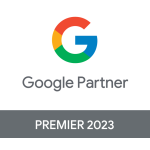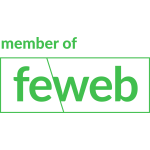First things first: what are cookies?
Functional and analytical cookies – what are known as first-party cookies – are small files that a website places on your device’s hard drive. It’s thanks to the identifying data in these files that websites can recognise you and save you time. They are linked to a specific domain name. The goal is to optimise how the website works, based on the data collected, improving your user experience.
Third-party cookies are less harmless. They’re also known as tracking cookies, because they track you as you move from site to site. These cookies are not linked to the website or online store you visit, but to an unrelated – third – party. Companies like Google and Facebook collect that data, which are then used to create ads. So if you click a picture of a jacket you like, be ready for a torrent of ads featuring the same jacket for days after on various websites.

No to cookies, yes to privacy
June last year Google announced it would put an end to third-party cookies in 2023. Some browsers and tech giant Apple already give users the option to block cookies. The reason is the stricter data collection and privacy law (GDPR) along with the growing sense of responsibility among browser makers. People simply no longer accept websites tracking them online. Plus, despite the cookie statements, consumers often don’t know or understand what they are actually consenting to when they accept cookies from a website. First-party cookies, on the other hand, will continue to be used.
What a cookieless world looks like
The end of third-party cookies does present some challenges for online advertisers. With tracking outlawed, it’s much harder for you to identify your visitors. That also makes retargeting, A/B testing and conversion rate optimisation (CRO) less easy and reliable. You’ll find it harder to assign conversions to a specific channel too = no more return on investment (ROI) on that campaign on that channel. Basically, it’s going to be harder to communicate with your target audience.

Looking for alternatives
But there’s no need for undue concern, as there are plenty of good alternatives. One of which is contextual targeting. This form of targeting automatically places ads in a relevant context. Do you sell clothes? In that case your ads will be displayed on fashion and lifestyle websites using artificial intelligence (AI) and natural language processing (NLP). That’s what we’re talking about!
You can also opt for server-side tagging, in which you manage your own data. Collected data can still be shared with third parties like Google and Facebook, but this is done from your own server rather than a browser. That means you choose which data is shared and with whom. In this option, you control the privacy of your website visitors. On the downside, it’s more difficult to implement in terms of technology and the price tag is also quite a bit higher. Of course, you could start by escalating your use of first-party cookies to track visitors and maximise your data collection.
And the folks at Google are not exactly sitting on their hands either. They already have an alternative to third-party cookies. The aim of Google’s ‘Privacy Sandbox’ is to make personalised advertising possible without violating the privacy rights of consumers. So how does that work? User data are split into large groups, which ensures they remain anonymous. Only then are they shared with advertisers. Privacy Sandbox is currently in the testing phase. Watch this space...













